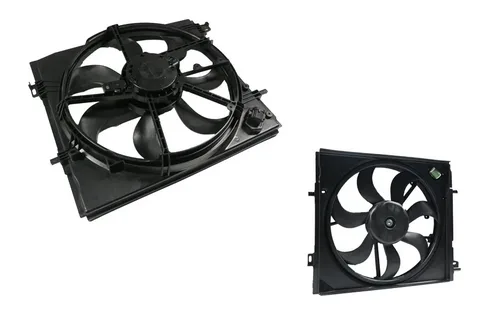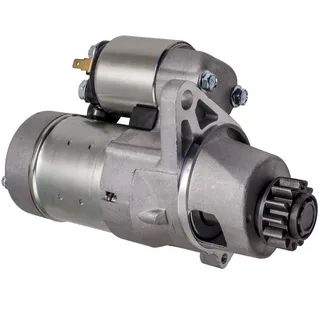The Internet of Things (IoT) has evolved from a futuristic concept to an essential component of modern business strategies. Today, enterprise IoT solutions are transforming industries by enhancing operational efficiency, reducing costs, and enabling innovative services. From manufacturing and healthcare to logistics and smart cities, IoT technology is reshaping the way enterprises operate. In this blog, we’ll explore how adopting enterprise IoT solutions can be a game-changer for businesses looking to scale, compete, and innovate in today’s digital-first environment.
1. What are Enterprise IoT Solutions?
Enterprise IoT solutions refer to the deployment of IoT devices, sensors, and systems specifically tailored for businesses and organizations. Unlike consumer IoT devices, which focus on personal convenience and entertainment, enterprise IoT solutions are engineered to solve large-scale, complex challenges in business environments. They connect machinery, monitor assets, and gather vast amounts of data in real time, providing actionable insights that drive better decision-making.
From predictive maintenance in manufacturing to real-time patient monitoring in healthcare, enterprise IoT solutions are enabling new levels of efficiency and performance. The data collected by IoT devices in an enterprise setting allows for optimized workflows, reduced downtime, and a higher return on investment.
2. Key Benefits of Implementing Enterprise IoT Solutions
a. Enhanced Operational Efficiency
With IoT-enabled devices, companies can monitor various metrics—such as energy usage, equipment performance, and environmental conditions—in real time. This data allows companies to improve productivity, reduce waste, and make timely adjustments. For example, in logistics, enterprise IoT solutions enable tracking of fleet vehicles, which helps optimize routes, reduce fuel consumption, and improve delivery times.
b. Cost Reduction and Resource Optimization
One of the major benefits of enterprise IoT solutions is the potential to significantly cut costs. IoT sensors and automation technologies can minimize resource consumption and labor costs. In industries like manufacturing, for instance, predictive maintenance powered by IoT can prevent costly equipment breakdowns by alerting operators to potential issues before they cause damage.
c. Improved Customer Experience
IoT technology empowers businesses to respond proactively to customer needs. For instance, in retail, IoT sensors can monitor inventory levels and send alerts when stocks run low, ensuring products are always available. By gathering and analyzing customer data, enterprise IoT solutions enable personalized interactions and services, improving overall customer satisfaction and brand loyalty.
d. Data-Driven Decision-Making
IoT devices collect data on every aspect of operations, from production processes to customer behavior. This data provides insights that were previously inaccessible, enabling better decision-making across all departments. Enterprise IoT solutions allow managers to make data-driven decisions, enhance operational transparency, and quickly adapt to changing market demands.
3. How Enterprise IoT Solutions Are Transforming Different Industries
a. Manufacturing
In manufacturing, enterprise IoT solutions are widely used to streamline production lines, improve quality control, and reduce machine downtime. Smart sensors monitor the health of equipment, ensuring timely maintenance and minimizing unplanned outages. IoT-driven automation also makes factories more agile, with greater control over the production process.
b. Healthcare
The healthcare industry benefits immensely from IoT technology, where enterprise IoT solutions improve patient care, track medical devices, and enhance operational efficiency. For instance, IoT-enabled wearables can monitor patient vitals remotely, alerting healthcare providers in real time of any changes. Hospitals also use IoT solutions to manage inventory, track assets, and optimize their supply chain.
c. Retail and Supply Chain
Retailers use enterprise IoT solutions to monitor customer behavior, manage inventory, and enhance the shopping experience. IoT sensors track foot traffic, optimize store layouts, and personalize promotions, while supply chain managers use IoT data to streamline logistics, reducing delays and costs.
d. Smart Cities and Infrastructure
Municipalities are adopting IoT to enhance city infrastructure, reduce energy consumption, and improve public safety. Enterprise IoT solutions are implemented to manage traffic, control lighting, and monitor air quality. By improving urban services, IoT helps create smarter, more sustainable cities for the future.
4. Challenges of Adopting Enterprise IoT Solutions
Despite the numerous benefits, implementing enterprise IoT solutions also presents some challenges. Here are a few key considerations:
a. Data Security and Privacy
With an increased number of connected devices comes a higher risk of data breaches. Security is paramount, as sensitive data can be intercepted, altered, or stolen. Enterprises must invest in robust cybersecurity measures to safeguard data from potential threats.
b. Integration with Legacy Systems
Many companies still rely on outdated, legacy systems that don’t natively support IoT technologies. Integrating these older systems with modern IoT solutions requires careful planning and investment, but successful integration can lead to significant long-term benefits.
c. High Initial Investment
The cost of implementing enterprise IoT solutions can be high, with the need for IoT devices, data storage, security, and specialized skills. While the initial expense may seem prohibitive, the long-term benefits often outweigh the upfront costs.
d. Data Overload
Enterprise IoT solutions generate vast amounts of data. Without an effective data management system in place, companies may struggle to interpret and act upon this information. Data analytics platforms and trained personnel are crucial to making sense of IoT data and deriving actionable insights.
5. Best Practices for Successfully Deploying Enterprise IoT Solutions
If you’re considering investing in enterprise IoT solutions, following these best practices can help ensure a smooth and successful deployment:
a. Define Clear Objectives
Before implementing IoT, it’s important to identify the business goals it should address. Whether it’s improving efficiency, reducing costs, or enhancing customer satisfaction, a well-defined objective will help guide the IoT strategy.
b. Start Small and Scale Gradually
IoT implementation can be complex, so it’s often best to start with a pilot project. Once the pilot demonstrates value, scale the solution across departments or locations. This approach allows for adjustments and minimizes risk.
c. Prioritize Data Security
Invest in secure, end-to-end encryption for all IoT devices and networks. Regular audits and updates are essential to protect data and prevent unauthorized access.
d. Partner with IoT Experts
Working with IoT professionals can help streamline the integration process, optimize costs, and address any technical challenges. Experienced IoT providers can offer support tailored to your specific industry needs.
Conclusion
In today’s competitive landscape, adopting enterprise IoT solutions is no longer optional—it’s essential. As companies continue to face pressures to innovate and increase operational efficiency, IoT technology provides the tools needed to thrive. From real-time data collection to advanced analytics, enterprise IoT solutions enable businesses to make better decisions, reduce costs, and create value. Whether in manufacturing, healthcare, or retail, enterprises that leverage IoT will be well-positioned for a sustainable, technology-driven future.
By focusing on the unique needs of your business and investing in the right IoT solutions, you can unlock new growth opportunities and transform your operations for long-term success.
For more interesting blogs click here.




